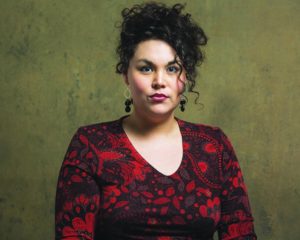#75: Wednesday, January 25, 2023
“Skin” – composed by Mari Esabel Valverde
Poetry by Naomi Shihab Nye
SSAA, piano
Are you looking for a brand-new piece for your SSAA ensemble? Something lush and sweeping, with thought-provoking text? Composed by, and using the poetry of, two wonderful women with diverse, expansive, multi-faceted backgrounds? Then read on!


